
- ENG
Research Consortia
Seoul National University - Standford University
Research Project
- Global C2H Research Center
Consortium Members
| Type | Domestic Institution | International Institution |
| Lead | Seoul National University | Stanford University |
| Partner | Pohang University of Science and Technology | Massachusetts Institute of Technology Northwestern University University of Chicago |
| Commissioned | Korea University |
Research Summary
Purpose
- Establish a multi-institutional global joint research center for original technology development and demonstration, with participation from top-tier Korean and U.S. researchers.
- Develop original technologies with broad applicability capable of achieving high energy conversion efficiency throughout the entire C2H (CO₂ to Hydrogen) cycle.
Research Content
- Create added value by integrating technologies traditionally developed separately under either the carbon reduction cycle or the hydrogen cycle.
- Identify and connect core technologies including CO₂ capture, conversion, storage, production, and utilization, and construct a unified research platform and plan.
Consortium Features
Domestic Institution
- Advanced catalyst interface analysis technology and mechanistic research capabilities at the global top level.
- Holds cutting-edge techniques for atomic-level catalyst reconstruction using transmission electron microscopy (TEM) and simulations, with publication in Science.
International Institution
- End-to-end CO₂ capture and conversion solutions, from fundamental technology to commercialization.
- Possesses synthetic fuel technology with higher selectivity compared to domestic standards.
- Operates one of the world’s most advanced platforms for CO₂ capture and conversion.
Outcomes, Applications & Expected Impact
Research Outcome Utilization
- Establish a catalyst design methodology and modularization strategy by identifying reaction mechanisms in CO₂ capture/conversion and hydrogen production/utilization.
- Develop core business technologies through continued integration and comparative analysis of technologies, ultimately implementing the full C2H cycle.
Industry Impact via Joint Research
- Modularize key technologies developed through this project to support broad application across hydrogen utilization and carbon neutrality fields.
- Promote the creation of new derivative industries by tailoring key technologies to industry-specific demands and enabling selective adoption.
Researchers (PI)
-
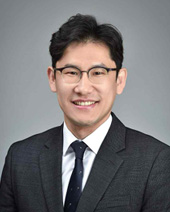 Jungwon Park Professor(Associate Professor)Seoul National UniversityMain research areas
Jungwon Park Professor(Associate Professor)Seoul National UniversityMain research areas- Development of carbon dioxide conversion catalyst
- Development of catalyst for hydrogen storage and utilization
- Analysis of energy storage material reaction behavior
- Analysis of fuel cell material reaction behavior
- Analysis of materials based on transmission electron microscope
-
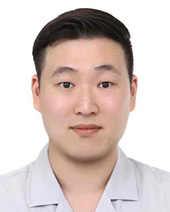 Byoung-Hoon Lee Professor(Assistant Professor)Korea UniversityMain research areas
Byoung-Hoon Lee Professor(Assistant Professor)Korea UniversityMain research areas- Energy materials design and synthesis
- Water electrolysis and fuel cells
- Carbon capture and conversion
- Photo/electrochemical catalysis
- Next-generation lithium-based batteries
-
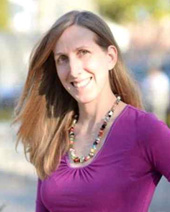 Jennifer Dionne Professor(Professor)Stanford UniversityMain research areas
Jennifer Dionne Professor(Professor)Stanford UniversityMain research areas- Biophotonics: Machine learning and nanophotonics for label-free molecular-to-cellular detection
- Active and electro-optically-tunable nanophotonics
- Photocatalysis: Electrifying the Chemical Manufacturing Industry
- Extreme energy-shifting nanoparticles: Upconversion and Scintillation
- Structural Characterization of nanomaterials
-
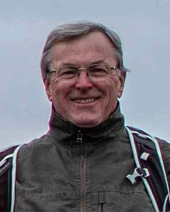 Alan Hatton Professor(Professor)Massachusetts Institute of TechnologyMain research areas
Alan Hatton Professor(Professor)Massachusetts Institute of TechnologyMain research areas- Development of electrochemical carbon dioxide capture materials
- Development of air-based carbon dioxide capture systems
- Carbon dioxide sequestration
- Development of electrochemical wastewater purification systems
- Synthesis of catalytic nanoparticles and structures
-
 Edward Sargent Professor(Professor)Northwestern UniversityMain research areas
Edward Sargent Professor(Professor)Northwestern UniversityMain research areas- Electrochemical capture of carbon dioxide
- Synthesis of fuel materials through carbon dioxide conversion
- Development of high-efficiency solar cells based on perovskite tandem cells
- Development of UV, IR optical sensors
- Development of new materials for optoelectronic devices based on machine learning
-
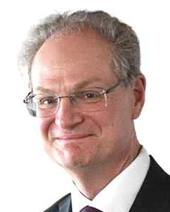 Paul Alivisatos Professor(Professor)University of ChicagoMain research areas
Paul Alivisatos Professor(Professor)University of ChicagoMain research areas- Machine learning-based nanomaterials research
- Synthesis and properties of nanoparticles
- Development of III-V group semiconductor nanocrystals
- Spectroscopy and structural studies of colloidal nanocrystals
- Quantum information science using scalable materials
